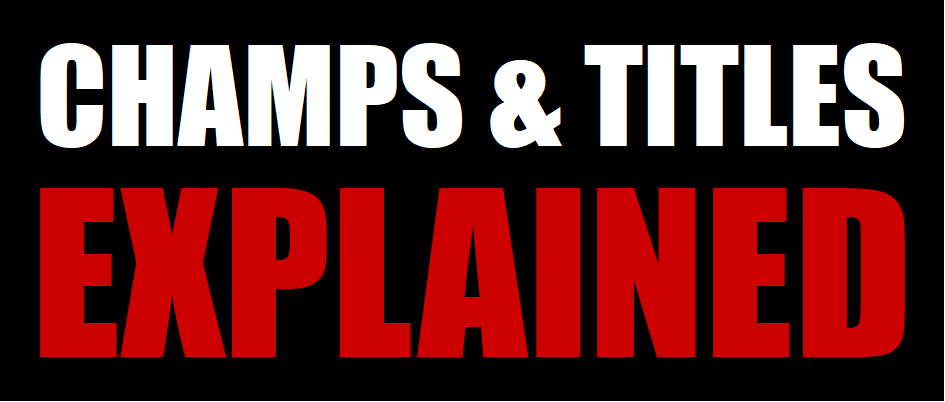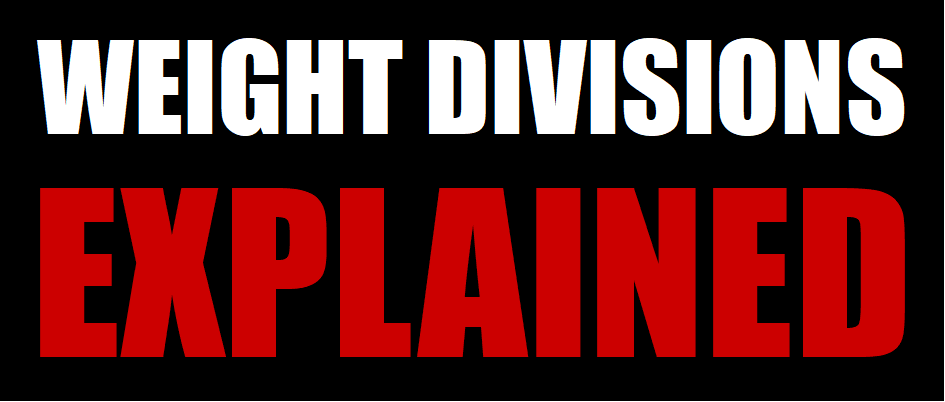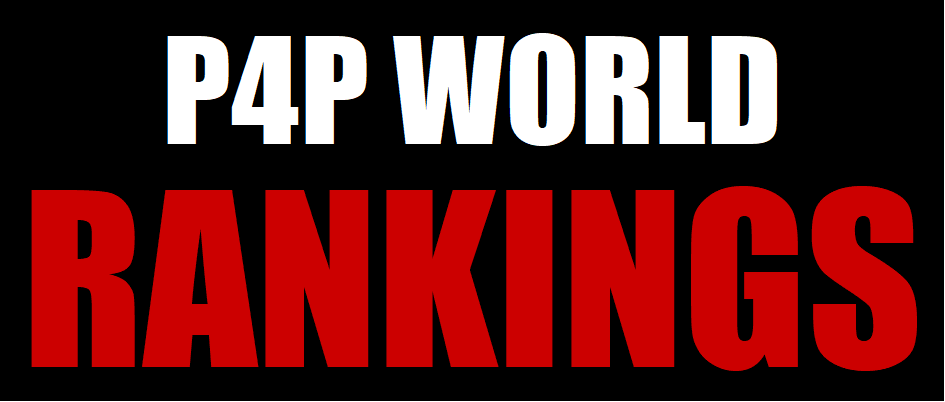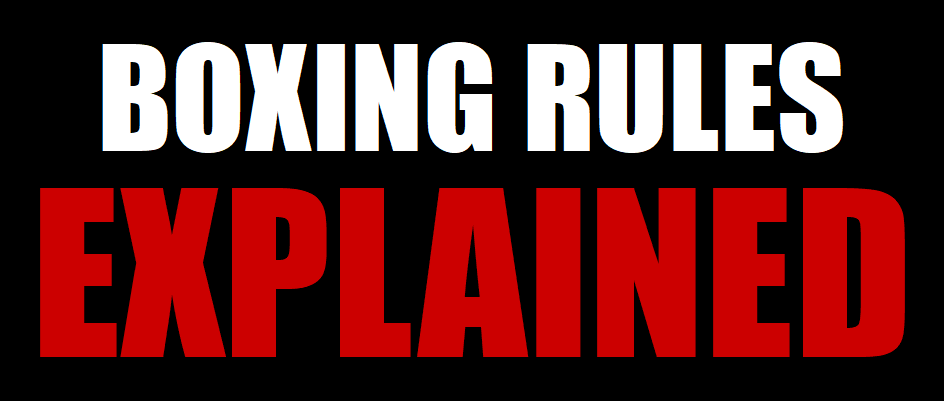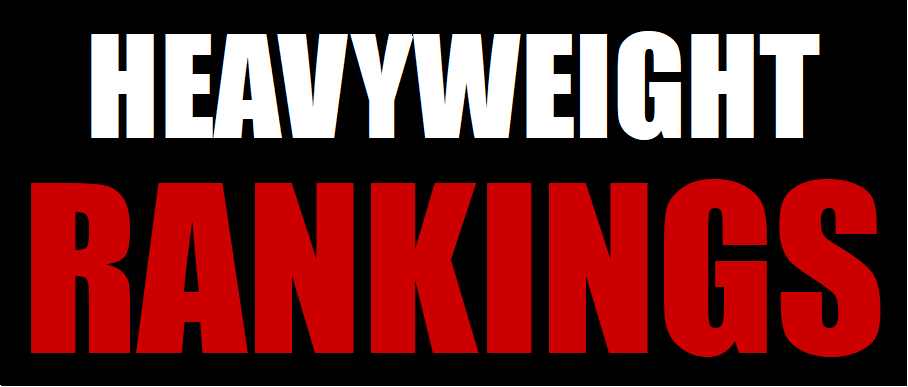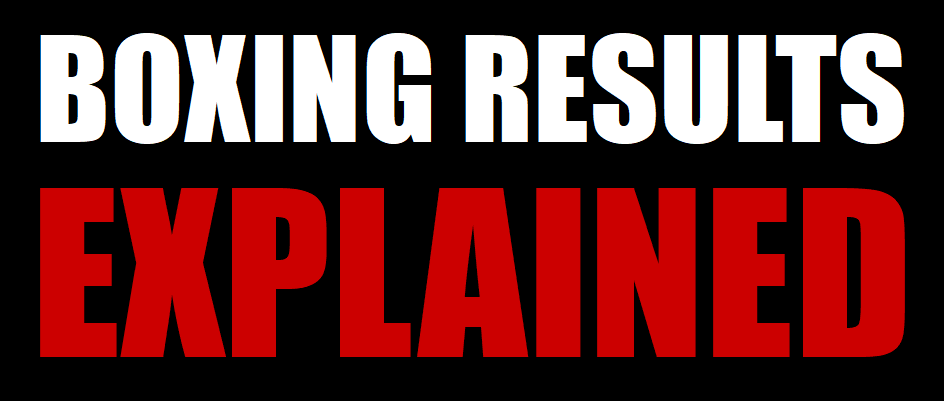A complete boxing words, terms & phrases glossary featuring every piece of lingo – here covering A, B and C. Just part of our huge Boxing FAQ.
Select a glossary section from below:
Words & Terms: #

10 Count
When a boxer is knocked down, he will have to beat a ’10 count’ to avoid losing the bout by knockout (KO). In other words, he will have to regain his footing and be in an upright-standing position before ten seconds have elapsed.
For more information on knockdowns and rules, see our Boxing Rules Explained Guide.
10-Point-Must Scoring
The scoring system used for professional boxing that awards 10 points to the winner of a round, and 9 to the loser. While judges are typically encouraged to score decisively in this manner, 10-10 (even) rounds can still be scored at their discretion.
If a boxer scores one or more knockdowns, the round is scored 10-8, 10-7 and so forth. The same goes for point deductions resulting from fouls. Moreover, a notably dominant boxer can win a 10-8 round despite no knockdowns being scored.
While mistakes can be made by referees calling the action, knockdowns and point deductions remain the only objective aspects of judging, and must therefore be reflected on a judge’s scorecard. You can find out more about scoring in our Boxing Results Explained Guide.
10 Second Clap
Refers to the ‘clap-clap’ sound which notifies both the referee and boxers that the end of the round is approaching. The referee will often state to the boxers: “10 seconds, stop fighting at the bell.” A ringside Time Keeper usually creates the sound.
Words & Terms: A
Accidental Head Butt
Whether due to an individual or mutual clash, referees declare unintentional meetings of skulls as accidental. Conversely, deliberate clashes are deemed fouls, which are usually punished with point deductions.
AIBA
International Boxing Association; a body that governs Olympic boxing contests.
Alias
Or boxer nickname; for example, Muhammad ‘The Greatest’ Ali.
Alphabet Soup
Refers to the often confusing landscape of sanctioning bodies and their long catalogue of world title belts, whether they be Interim, Silver, Diamond, Regular or the Super variety. If there’s one thing fans loathe, it’s boxing’s plethora of belts which have diluted modern era championship status.
For more info, see our World Champions & Belts Explained Guide.
Amateur
Amateur boxers compete in unpaid ranks. This variation of the sport, where headgear and 14oz gloves is typically mandatory, is very popular at the collegiate level. Judges score bouts based on clean punches to the head only; this differs from boxing which centers more so around hurting an opponent.
Many schools and colleges offer Amateur boxing clubs, with elite boxers eligible to compete for their state/country in Amateur competitions, all the way up to the Olympics. Exceptional pro boxers usually progress from successful Amateur careers where they honed solid fundamentals, technique and experience. Otherwise known as ‘Amateur pedigree’.
Apron
Refers to the section of canvas outside of the ropes.
Anchor Punch
A chopping shot somewhere between a hook and straight cross. Some analysts claim that Muhammad Ali’s anchor punch was hard enough to knock out Sonny Liston in their controversial rematch.
Arm Punches
A boxer who, due to incorrect training or poor execution, throws his punches solely through his arms, leading to a lack of power. The most powerful punches typically start from the ground up, traveling through the legs, hips, back and shoulders, before ending in the fist.
Arm punches, however, can also be employed by great boxers. Technicians, such as Vasyl Lomachenko, often mix in softer punches with their more powerful offense in order to surprise their opponents.
Athletic Commissions
Commissions in the US are run by states that allow professional boxing matches. They have many roles, such as authorizing promoters to stage fights, appointing judges, referees and other officials, and handling boxer suspensions.
Association of Boxing Commissions
A boxing organization comprised of various members operating in the US and Canada. The organization sets members safety requirements which must be implemented in all professional bouts.
Words & Terms: B
Bag Gloves
Usually gloves with little padding (or considerably less than sparring gloves) worn by a boxer hitting punch bags during training sessions.
Banger
A heavy-handed boxer who relies mostly on his power to win fights. While ‘bangers’ can be patient, they often favor aggression over subtlety. Before Carl Froch adopted a solid jab in his later career, he was often pigeon-holed as a great banger.
Bantamweight
A weight class for boxers who must weigh no more than 118 lbs/54 kg before fight night. You can find out more about pro boxing weights in our Boxing Divisions Explained Guide.
Bare-Knuckle Boxing
Or Fisticuffs; an original form of glove-less boxing dating back over a thousand years. Gloves were first introduced to boxing in the early 18th century following the creation of the Queensberry Rules. Bare knuckle boxing still exists, both in unlicensed ‘underground’ contests, and the professional variety.
Barnstormer
A term that describes a boxer who typically travels between small towns and competes against local boxers to earn low but frequent pay days. Barnstorming is far less common nowadays, being at its most popular during the early and mid-20th century.
Battle of Attrition
This refers to a bout where both boxers are landing telling blows, yet neither man is prepared to back down. They may be wilting due to the bout’s violent nature, with the outcome being less about who has the better technique than it is about who craves victory more. Micky Ward and Arturo Gatti’s first bout is a famous example.
Battle of Jabs
This refers to boxers who are engaging in a chess-like battle to land and or dominate a fight with the jab. Technically-minded boxers may look to time their shots and out-counter one another in this way.
Beard
Or Whiskers; refers to a boxer’s punch resistance when caught clean to the jaw area.
Beat the Count
Refers to a fallen boxer who has to beat the referee’s 10-count following a knockdown.
Below the Belt
An illegal punch, which may or may not have been intentional, to the groin area. A commentator may state that “John Smith’s punch was well below the belt!” You can find out more about low blows and illegal punches in our Boxing Rules Guide.
Belt
A title (state, national or world) sanctioning bodies award to boxers following a victory.
Belt Line
The area boxers are prohibited from punching below. The aim is to protect the groin/hip area, with the belt line itself typically said to cross the naval.
Bicycle
A hurt and or tired boxer may opt to jump on his figurative ‘bicycle’, meaning he intends to use his footwork to survive the round and avoid further damage.
Big for the Weight
Refers to a boxer who, while having successfully made weight, appears to be larger than his opponent (and division counterparts generally). For instance, he may appear taller or broader. Standing at 6′ 2″, Paul Williams, who began his career at Welterweight, was notably considered ‘big for the weight’.
Some boxers, who are naturally too big for a division, may be criticized for competing at the weight due to their perceived size advantage. For example, a natural Super Middleweight may deliberately cut weight to campaign at Middleweight where he can quickly bulk up overnight. Julio Cesar Chavez Jr. was often criticized for being too big for his weight class.
This practice does not necessarily guarantee an advantage come fight night, however. Excessive weight cutting followed by fast bulking can take its toll and be detrimental to a boxer’s performance and health. You can find out more about weight classes in our Boxing Weights Explained Guide.
Bleeder
Refers to a boxer highly susceptible to cuts, and therefore with a tendency to bleed during bouts. This may be due to ‘thin skin’, prominent brow features and high cheekbones. Henry Cooper was a well-known bleeder, as was Chuck Wepner whose alias was literally the ‘Bayonne Bleeder’.
Blown Up (boxer)
Refers to a boxer campaigning in a weight class that appears to be ‘too big’ for him. In other words, his natural build/frame is considered too small. For instance, some critics argued that Canelo Alvarez fought a ‘blown up’ opponent in Josesito Lopez.
You can find out more about weights in our Boxing Weight Divisions Explained Guide.
Blow
A landing punch.
Blocking
The act of defending against a punch by using the gloves, shoulder, forearm or elbow.
Bob and Weave
A defensive maneuver involving lateral side-to-side movement and ducking to evade punches.
Body Shot
Refers to a punch thrown to the body which can knock the wind out of opponents, slowing them down, and even produce a knockout. A ‘banger’ may choose to ‘take the legs’ off a fleet-footed boxer by attacking his body in the early rounds.
Bolo Punch
An effective but seldom used shot somewhere between a hook and uppercut. Highly-skilled boxers such as Roy Jones Jr have implemented the unorthodox ‘bolo punch’, often catching their opponents off guard.
Bout
A boxing fight, contest, matchup.
Boxer (style)
By definition, every boxer is of course a boxer. But a more refined, technically-minded boxer is referred to as a ‘boxer’. Characteristically, boxers avoid brawling, instead relying on a solid jab, advanced footwork, patience, timing and strong defense.
Boxing Booth
Long before boxing became a lucrative profession, many contests took place in the English countryside in ‘boxing booths’ as early as the 18th century. The booths travelled with fairs and circuses, entertaining local crowds.
Boxing Commission
An organization that regulates and oversees professional boxing to ensure bouts are fair, properly conducted, and meet high standards of health and safety.
Boxer-Puncher
Refers to a boxer with refined technical skills who also carries a heavy punch. Modern boxers like Canelo Alvarez and Gennady Golovkin are widely considered ‘boxer-punchers’.
Boxer’s Handshake
The moment boxers touch gloves before the first bell of a fight. During a fight, boxers may also touch gloves for other reasons; out of sportsmanship at the beginning/end of a round, or in an apologetic manner if a boxer accidentally commits a foul.
Boxing Rules
You can find an extensive list in our Boxing Rules Explained Guide.
Boxing Shoe
A specific type of boot worn by boxers to improve footwork and performance. They are typically high-topped to provide ankle support, with a short heel and rubber soles.
Brawler
A boxer who favors a highly aggressive, come-forward style in the ring. All-action boxers like Brandon Rios are considered brawlers.
Breadbasket
Refers to a boxer’s stomach.
Break
Refers to the moment a referee separates boxers during a clinch in order to resume ‘clean’ action. The boxers are usually asked to take two steps back following the break.
British Boxing Board of Control (BBBofC)
The governing body of professional boxing in the UK and Northern Ireland which regulates and oversees boxing personnel and bouts. It also sanctions bouts where victors are awarded with Area, National and the prestigious British (Lonsdale) title belt.
Brutal Ballet
Another name for boxing, aptly named for its mix of ‘dancing’ (footwork/subtlety) and brutality (punching/violence). Many people are drawn to boxing due to its odd juxtaposition of poetry meets barbarism.
Buckled (legs)
Refers to the moment a boxer’s legs become unsteady after receiving a heavy blow. The legs of Tyson Fury were buckled during the 9th round of his fierce battle with Oleksandr Usyk.
Buckshot Punch
Most commonly known as a straight right-hand followed by a one-two feint, and finally another straight right.
Bum/Chump
A boxer considered to be an unworthy contender due to their limited ability and or strength of mind inside the ring.
Bum Rush
Usually a term to describe the manner in which a boxer charges forward and unloads a barrage of punches in an effort to surprise his opponent and score a KO.
Buzzed
Or rocked, shaken; the moment a boxer is caught with a big shot that dazes him. The opponent (who delivered the shot) will often turn on the pressure and look to knockout the ‘buzzed’ boxer.
Words & Terms: C
Canvas
Refers to the flooring of a boxing ring.
Cash Cow
A hugely popular boxer who generates exceptionally high revenue for himself, along with promoters and streaming/TV networks, etc. Today’s superstars, like Canelo Alvarez, Gervonta Davis and Ryan Garcia, receive lofty purses whenever they fight.
For that reason, lower-earning boxers often queue up to face them in hopes of securing career-high paydays for themselves.
Catchweight
Fights taking place outside of regulation weight limits. For instance, a Junior Welterweight and Welterweight may compromise by agreeing to fight at a ‘catchweight’ of 143 pounds. Titles will not be on the line given that the weight is unrecognized by sanctioning bodies.
Catchweight bouts can sometimes affect a boxer’s performance, especially if it’s their first time deviating from their natural fighting weight. You can find out more about conventional weights in our Boxing Weight Classes Explained Guide.
Caught Cold
The moment a boxer is stunned, hurt, or knocked out in the early stages of a fight. For instance, if a boxer is knocked down just seconds into the 1st round, it may be said that he was ‘caught cold’ (before he could warm up/find his rhythm).
Cauliflower Ear
The inside of a boxer’s ear may become puffy and swollen due to repeated trauma to that area from punches.
Caution
Or a warning; the referee may give a caution to a boxer who has committed a foul. For example, an intentional low blow. You can find out more about various fouls in our Boxing Rules Guide.
Championship Reign
The period of time a boxer holds a world title, either before losing it to a challenger or by vacating it.
Championship Rounds
Refers to the final stages of a fight, usually rounds 10-12 which can be the most testing physically and mentally. A veteran may criticize an inexperienced prospect, commenting: “He’s good, but does he have what it takes to go into the championship rounds?”.
Chapter
A seldom used term for a boxing round.
Check-Hook
An effective punch strategically thrown while an opponent is lunging forward and loading up with a big shot. The check-hook is executed by leaning back and throwing a counter-hook that catches the attacking boxer. A perfect example of this was demonstrated by Floyd Mayweather against Ricky Hatton in 2007.
Check One’s Chin
A boxing fan may comment that a rising prospect “has never had his chin checked”. In other words, they have questions about how said boxer will react when they are matched against a big puncher.
Chicken Dance
A boxer caught by a heavy blow may do a ‘chicken dance’ due to his legs being unsteady. It was said that Zab Judah did a ‘chicken dance’ following a vicious knockdown at the hands of Kostya Tszyu in 2001.
Chin
Refers to a boxer’s punch resistance and therefore ability to handle a clean shot, usually to the jaw area. The ‘chin’ is considered a highly vulnerable spot, hence the reason why most will keep theirs tucked in during a bout.
Chief Second
Refers to a boxer’s head trainer/cornerman that offers strategy and encouragement between rounds. With the exception of the cutman, only one chief second is allowed into the ring.
Chief Support
Usually refers to an undercard matchup staged right before the main event. This bout may carry significant interest to boxing fans. For instance, the tantalizing Danny Garcia vs. Lucas Matthysse played ‘chief support’ on the Mayweather vs. Canelo card in 2013.
Clam Shell (defense)
A form of tight guard which involves locking the forearms together and hunching over slightly to protect the head.
Clinching
Or holding, hugging; a hurt boxer may ‘clinch’ his opponent to stave off an attack that could lead to a knockout defeat. He may also clinch to catch his breath, reserve energy, or frustrate/spoil his opponent’s effective work. While minimal clinching is tolerated by referees, excessive usage is against Boxing Rules.
Close-Range Fighting
Any action unfolding at close-range in ‘the pocket’ with minimal distance between each boxer. Action closer still, with boxers leaning on each other between punches, is referred to as ‘infighting’.
Club Fighter
Can refer to a fighter who literally competes in small club venues, but usually a fighter who performs at a low level. A critic may comment that “John Smith has no chance against the champ – he looks like a club fighter.”
Color
Refers to a boxer’s personality and charisma exuded in and outside of the ring. Flamboyant boxers like Tyson Fury and Prince Naseem Hamed would be described as having “color”.
Combination
Any attack (thrown in sequence) consisting of more than a single punch. For example, an effective combination may be a one-two to the head, followed by a left-hook to the body. Manny Pacquiao and Juan Manuel Marquez are accomplished combination punchers.
Comeback
Following a heavy loss, a boxer may choose to continue his career with a ‘comeback’ return. Many champions who had significant setbacks, such as George Foreman and Sugar Ray Leonard, went on to successfully resurrect their careers.
A comeback could also refer to when a boxer turns the tables during a fight – despite being well behind on the scorecards. Boxing history contains plenty of dramatic comebacks, such as the thrilling Diego Corrales vs. Jose Luis Castillo I, and Carl Froch vs. Jermain Taylor.
CompuBox
A computerized system that counts the amount of punches thrown and cleanly landed during a bout. TV/streaming networks often employ the system’s statistics to provide viewers with greater insight. CombuBox numbers, however, have no influence over scorecards or a bout’s outcome.
Contender
Every boxer is considered a contender since they are usually eyeing a world title shot. However, a boxing fan may remark that “the champ better watch out tonight cos’ John Smith is a true contender”, meaning that Smith is hungry and looking to put on a spirited performance.
Corkscrew Punch
A punch (usually a straight-cross or jab) thrown with an extra twist of the wrist. While some claim it adds increased power and encourages cuts to open, this is much debated.
Corner
A boxer’s team on fight night usually consisting of a head trainer, second trainer and cut man. Trainers offer strategy and encouragement during between rounds, while the cut man works to reduce facial damage.
Count
Refers to a referee’s 10-second count given to a boxer following a knockdown.
Counterpunch
When a boxer strategically throws a punch while his opponent is attacking. This is one of the best moments to land a clean punch given how the opponent’s guard is most open. For instance, a boxer may counter a left jab with a powerful overhand right.
Counterpuncher
A boxer known for timing opponents with counter shots. Floyd Mayweather was a prolific ‘counterpuncher’ who often landed his best punches against aggressive opponents.
Covering Up
Simply when a boxer raises his gloves defensively to ward off an attack.
Cross
A boxer’s straight rear-hand punch. For an orthodox boxer, this would be his most powerful hand. The ‘cross’ is commonly thrown following a jab (since it has further to travel), producing a textbook one-two combination.
Cross-Counter
A straight shot fired from a boxer’s rear-hand, strategically thrown to catch an attacking opponent.
Cruiserweight
A weight division one rung below Heavyweight, with a limit of 200 lbs/91 kg. You can find out more about the sport’s different weights in our Boxing Weight Classes Explained Guide.
Cutting Weight
Refers to the process of a boxer losing weight during a training camp in order to make weight for a fight.
Cutman
A member of the boxer’s corner. The cutman’s job is to treat facial damage, stemming blood from cuts/the nose, and reducing swelling around the eyes, in an effort to prolong a boxer’s time in the ring.
Cutmen use tools such as a cold iron called an enswell (to reduce swelling), an ice bag, cotton swabs (soaked in adrenaline to decrease blood flow), and petroleum jelly (spread over cuts and facial areas most likely to receive blows). Since bout’s can be stopped due to severe cuts and swollen eyes, cutmen are deemed crucial corner members.
Select a glossary section from below:
Return to Boxing FAQ?

